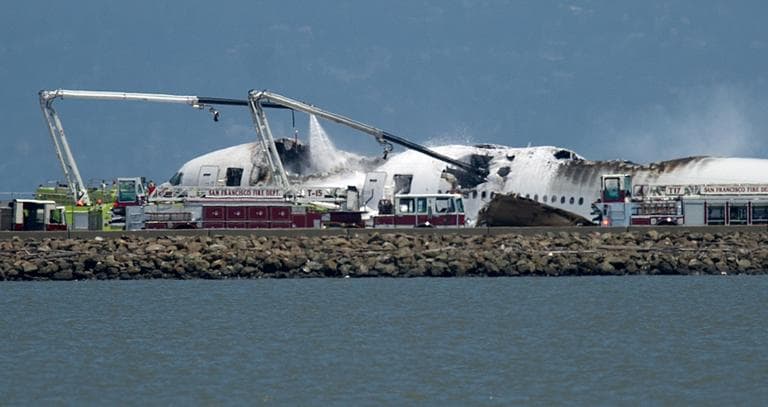Advertisement
A Pilot's Perspective On San Francisco Crash
Resume
Investigators are trying to determine whether pilot error was to blame in the deadly crash at San Francisco's airport over the weekend.
The crash killed two people and sent more than 180 to hospitals.
Asiana Airlines has said that Lee Gang-guk, who was at the controls, had nearly 10,000 hours flying other planes but only 43 hours flying the Boeing 777. It was his first time landing that type of plane at that airport.
Officials have said that Flight 214 was going significantly slower than it was supposed to on approach, and crew members tried to abort the landing seconds before the crash.
Kevin Hiatt, a former Delta pilot and head of the Flight Safety Foundation, an independent nonprofit that provides safety information for the aviation and aerospace industries, told Here & Now it's too early to know whether pilot error caused the crash.
Interview Highlights: Kevin Hiatt
How big a difference is there between landing a 777 and a 747?
"Well they're both wide-bodied aircrafts. They both have a lot of weight and a lot of inertia to them, and so the landing characteristics are relatively similar. However, as we would say from the cockpit, the picture is a little bit different as you look outside. You're much higher on the 7-4 than you are the triple-7. So the transition time — there would be some time that the pilot would need to make sure that he was comfortable with that particular profile, and he has a line check airman there to make sure that they are satisfied that he has met that parameter," Hiatt said.
Is it very different to land at San Francisco's airport versus JFK?
"Not really. That's an airport that's got excellent facilities. We have approach plates that we use for every single airport that we fly into in the world, and your experience level will allow you also with your training to fly into any new airport. It happens every single day, all over the world, where a captain or a first officer, it may be the first time they they've gone into a particular airport."
Why wouldn't another pilot have stepped in?
"This is where we call the human factors — the area of the investigation — and part of that is what we call crew resource management. And that will come out through more of the interviews that they're going to hold with all of these crew members to find out what was exactly happening at the time. Were the checklists being completed in a timely manner? And is there something there that we don't know about yet that will come out?"
Guest:
- Kevin Hiatt, president and CEO of the Flight Safety Foundation, and a former Delta pilot.
This segment aired on July 8, 2013.